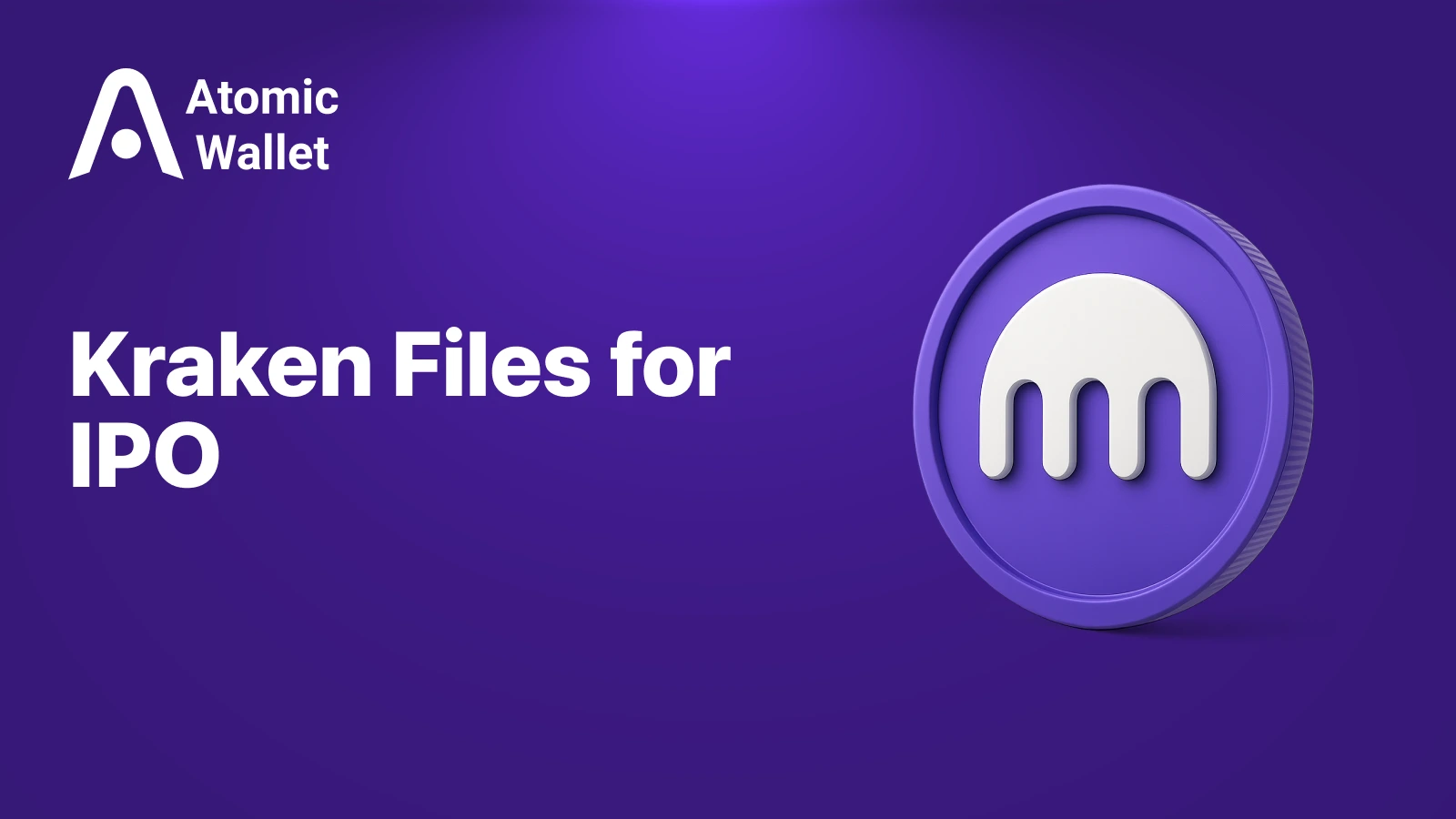Assets

Exchange

Buy Crypto




Kraken has quietly taken a major leap toward becoming a publicly traded company. The crypto exchange has confidentially filed a Form S-1 with the U.S. Securities and Exchange Commission, signaling preparations for a long-anticipated IPO. As one of the oldest and most respected platforms in the industry, Kraken’s move comes at a time when crypto markets are stabilizing, institutional trading is accelerating, and several major competitors—Circle, Bullish, Gemini—are also exploring public listings.
With reported Q1 2025 revenue of $472 million and monthly trading volumes exceeding $40.5 billion in October, Kraken enters the IPO conversation from a position of strength. The company plans to expand globally, upgrade its derivatives offering, and grow its Bitcoin and tokenized-asset products—moves supported by investors like Citadel Securities and Jane Street. For the broader crypto industry, Kraken’s filing represents another sign that digital-asset firms are maturing into fully regulated financial institutions.
Kraken submitted its confidential Form S-1 on November 19 from its Wyoming headquarters. A confidential filing allows companies to begin the SEC review process without publicly disclosing sensitive details such as share count, valuation, or pricing ranges. These specifics will only be released once the SEC completes its initial review and market conditions align with the planned offering.
The filing doesn’t guarantee an immediate IPO, but it confirms Kraken has entered the regulatory pipeline. The next steps include SEC feedback, potential revisions to the S-1, and timing alignment with market sentiment. For now, Kraken joins a growing list of crypto firms positioning themselves for a return of public-market appetite.
Kraken’s timing isn’t random — the exchange is entering the IPO conversation from a position of strength.
Simply put: Kraken is scaling fast, expanding globally, and gearing up to operate like a fully regulated, publicly traded financial institution.
Kraken is positioning itself for life as a public company by expanding far beyond its core exchange business. The acquisition of Small Exchange strengthens its presence in the U.S. derivatives market, giving the firm a regulated pathway to offer futures products to both retail and institutional clients. At the same time, Kraken is doubling down on Bitcoin-focused services, including custody and treasury tools aimed at enterprises that want compliant exposure to digital assets.
Another major pillar of Kraken’s strategy is tokenization. The company is developing infrastructure for on-chain financial products and real-world assets, anticipating a market that is quickly shifting toward regulated, blockchain-based securities. Combined with aggressive global licensing and regulatory work, Kraken is making the case that it’s ready for the scrutiny, transparency, and operational scale demanded from a public financial institution.
Kraken’s confidential S-1 filing is more than a corporate milestone — it’s a signal of confidence for the entire crypto sector. After years of regulatory pressure and the fallout of major failures like FTX, seeing one of the oldest exchanges prepare to enter U.S. public markets suggests that mature, compliant crypto businesses are still able to scale and meet Wall Street standards. If Kraken succeeds, it will stand alongside Coinbase as one of the few digital-asset companies to win a place on a major U.S. exchange.
This IPO could also reignite interest from institutional investors who have been waiting for clear, regulated avenues to access the crypto economy. Kraken’s listing may set a benchmark for valuation, transparency, and operational discipline across the industry, encouraging more exchanges, brokers, and infrastructure players to consider public offerings. In many ways, Kraken’s path to the public market reflects the industry’s own transition from experimental technology to a regulated global financial system.
Prediction markets are already pricing in Kraken’s chances of becoming a public company, with current odds hovering around 61% for a listing before March 2026. These markets don’t guarantee anything, but they offer a snapshot of sentiment: traders expect Kraken to move forward unless regulatory or macro conditions shift dramatically. The timing ultimately depends on the SEC review process and whether broader market conditions remain strong enough to support a major crypto IPO.
There are several scenarios at play. If the SEC’s feedback is straightforward and the market continues its recovery, Kraken could target a traditional IPO window as early as late 2025. If volatility spikes or new regulatory hurdles appear, the company could delay or even opt for a different structure, such as a direct listing. For now, the path is open — but the timing remains fluid.
Despite the positive momentum, Kraken’s IPO plans come with meaningful risks. The U.S. regulatory environment for crypto remains uncertain, and any shift in policy could slow approval or force changes to the exchange’s business model. Market-dependent revenue also introduces volatility — bull cycles boost trading volume, but downturns can quickly compress earnings, complicating valuation and investor appetite.
Competition is another factor. Kraken faces pressure from Coinbase in the U.S., global offshore exchanges with deeper liquidity, and newer players like Bullish entering the public markets. Public-company obligations add a final layer of complexity: quarterly reporting, heightened transparency, and shareholder pressures could reshape how Kraken operates day to day. Investors should view the IPO as a major milestone — but not a risk-free one.
Prediction markets are already pricing in Kraken’s chances of becoming a public company, with current odds hovering around 61% for a listing before March 2026. These markets don’t guarantee anything, but they offer a snapshot of sentiment: traders expect Kraken to move forward unless regulatory or macro conditions shift dramatically. The timing ultimately depends on the SEC review process and whether broader market conditions remain strong enough to support a major crypto IPO.
There are several scenarios at play. If the SEC’s feedback is straightforward and the market continues its recovery, Kraken could target a traditional IPO window as early as late 2025. If volatility spikes or new regulatory hurdles appear, the company could delay or even opt for a different structure, such as a direct listing. For now, the path is open — but the timing remains fluid.
Despite the positive momentum, Kraken’s IPO plans come with meaningful risks. The U.S. regulatory environment for crypto remains uncertain, and any shift in policy could slow approval or force changes to the exchange’s business model. Market-dependent revenue also introduces volatility — bull cycles boost trading volume, but downturns can quickly compress earnings, complicating valuation and investor appetite.
Competition is another factor. Kraken faces pressure from Coinbase in the U.S., global offshore exchanges with deeper liquidity, and newer players like Bullish entering the public markets. Public-company obligations add a final layer of complexity: quarterly reporting, heightened transparency, and shareholder pressures could reshape how Kraken operates day to day. Investors should view the IPO as a major milestone — but not a risk-free one.
Manage your crypto securely and stay ahead of major industry shifts — store and trade digital assets directly from your non-custodial Atomic Wallet

Learn how Polygon Bridge works and move Polygon crypto like USDC Polygon between Ethereum and Polygon step by step.